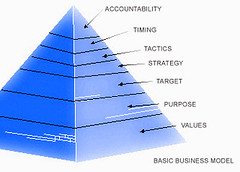
“Brand is the relationship between a product and its customer.” — Phil Dusenberry, former chairman and chief creative of BBDO Worldwide
I cannot seem to share this quote enough. Advertisers, marketers, public relations pros, and social media gurus are continually trying to change the way we define branding. In the process, sometimes they abandon one of the most basic branding principles.
Inside Out As The Key To Rebranding?
Jay Ehret, chief marketer at The Marketing Spot, seems to understand this. A few days ago, he likened most rebranding efforts to an attempt to put a new dress on the same tired body. He's right. When most people rebrand, all they change is their spots.
Instead, Ehret suggests that rebranding can only take place through actions. He cites a post by Jason Miletsky, at Mango! as inspiration. Miletsky makes it pretty clear that the change hinges on product offerings and customer relationships, which are conveyed by the new identity and message.
Their ability to deliver on those core values, translated into actions, will dictate the success or failure of the new brand. Actions, more than anything else, are the fundamental determinant in establishing the relationship between a product and its customer. Everything else is merely the symbol of that relationship.
As an analogy, you might say that a caterpillar has emerged as a butterfly and now its actions — fluttering about — will be instrumental in how people relate to it. The wings, colors, etc. only serve to remind us of what it is.
Outside In As The Key To Rebranding?
Interestingly enough, Brian Solis, principal of FutureWorks, shared his take on rebranding a few days later. He shares an edited passage from his book, Engage, which presents a brand reflection cycle.
When Solis talks about the brand, online, he suggests it can be shaped by developing persona through introspection. In other words, you pick important attributes you want and they, in turn, shape your company. The model even conveys the point by nestling the brand within core values, which Solis says are dictated by the audience, environment, and circumstances.
This is a remarkably dangerous approach. It has caused the failure of more rebranding efforts than I can count. Not all of the thinking is wrong, per se, but the application imagines that a company can be whatever it wants to be by the force of will alone.
Unfortunately, persona through introspection teaches a caterpillar to act like a butterfly, even though it is just a caterpillar. Even if you attach fake wings to fool some people, it will not fly.
Rebranding Starts With The Core.
There is no other way to explain it. Core values that exist within a company set the foundation for branding. While you can better communicate what those values are or establish what those values will be, they are what they are.
A caterpillar is a caterpillar. A butterfly is a butterfly. Neither can pretend to be the other because it's not in their nature.
You can see it in the Gulf Coast playing out daily. A few years ago, BP reinvented its identity to be green, following a process not unlike the one Soils prescribes. For the most part, people believed it until its true nature — dictated by recent actions — uncovered the ruse that the green logo represented. The company might have wanted to be the alternative energy butterfly (and maybe one day it will be), but all it really is may be just a petroleum addicted caterpillar munching its way through natural resources.
Actions, not image, dictates brand relationships. If you are not willing to change those (or are unable to do so), you are certainly better off being whatever it is you are. Your core values — which do not change because of the audience, environment, and circumstances — are who you are or what your company is. How you communicate that makes all the difference.
If you want to understand why the core message belongs dead center, review my presentation Simplifying Messages: Why SWOT Is Not Enough. The takeaway couldn't be simpler.
If you are a caterpillar, it's best to put your energy into being the best caterpillar you can be. And with the right message, people might even prefer you over a butterfly.
























